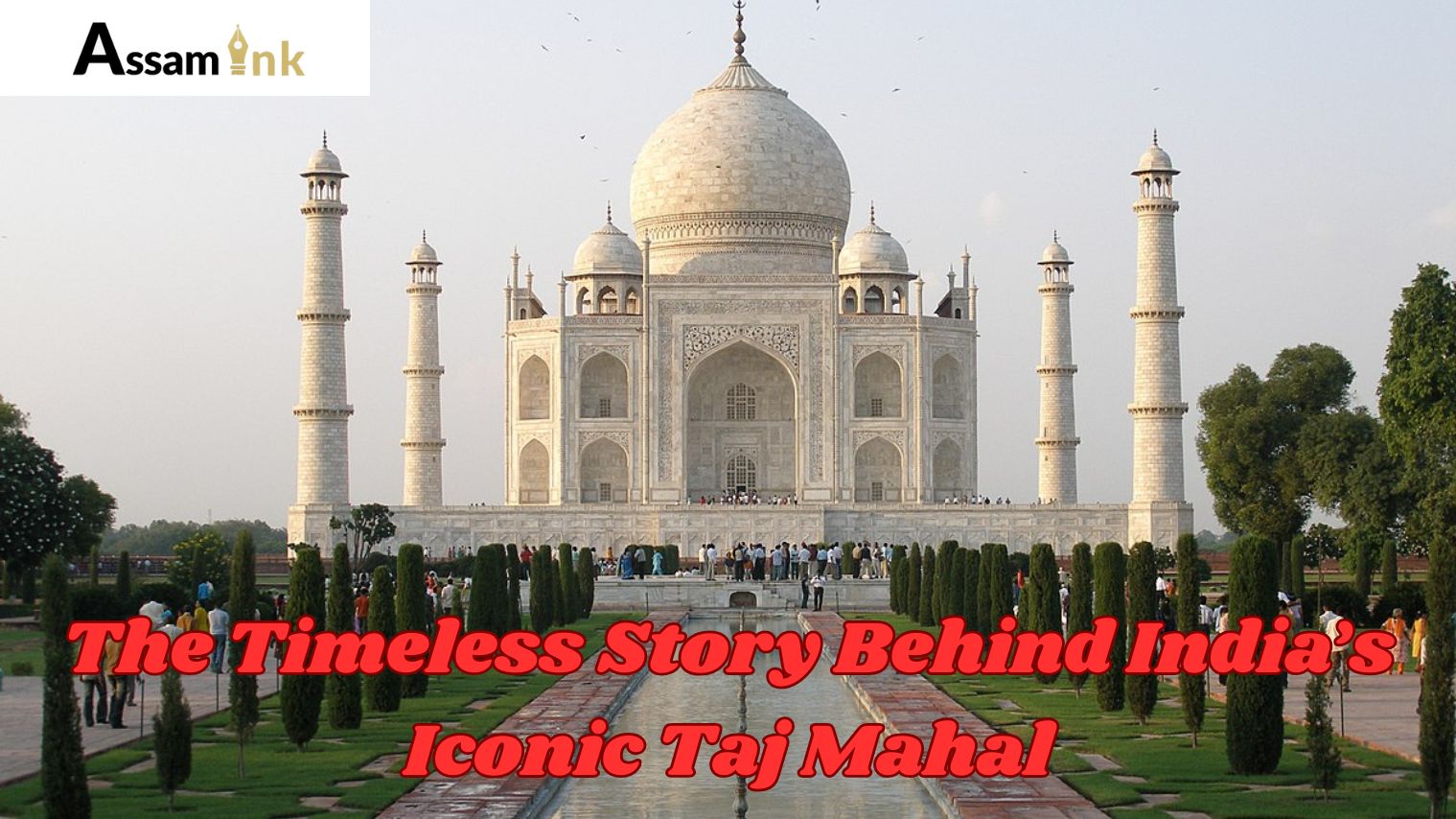
The Story Behind India’s Iconic Taj Mahal

 :
| Updated On: 13-Oct-2025 @ 2:01 pm
:
| Updated On: 13-Oct-2025 @ 2:01 pmSHARE
The Timeless Story Behind India’s Iconic Taj Mahal
The Taj Mahal, often hailed as the “Jewel of Muslim Art in India” and one of the Seven Wonders of the World, stands as a timeless symbol of love, grief, and architectural brilliance. Located in the historic city of Agra along the banks of the Yamuna River, this breathtaking white marble mausoleum continues to captivate millions of visitors every year. Its history is as compelling as its beauty, blending romance, tragedy, and grandeur in every intricate detail.
The story of the Taj Mahal begins with the Mughal Emperor Shah Jahan and his beloved wife Mumtaz Mahal. Born Arjumand Banu Begum, Mumtaz Mahal was the emperor’s inseparable companion and trusted confidante. Their love story, though royal and opulent, was marked by devotion and mutual respect. Mumtaz Mahal accompanied Shah Jahan on his military campaigns, standing by him even in challenging circumstances. Tragically, in 1631, during the birth of their 14th child, Mumtaz Mahal passed away, leaving Shah Jahan devastated. Overcome with grief, he vowed to create a monument that would immortalize her memory, a structure that would rival the most magnificent creations of the world.
Construction of the Taj Mahal began in 1632 and took over 22 years to complete, involving more than 20,000 artisans, masons, stonecutters, and craftsmen from India, Persia, and Central Asia. The chief architect, Ustad Ahmad Lahauri, is widely credited with designing this masterpiece, though countless unnamed artisans contributed their skills to every delicate carving, intricate inlay, and decorative flourish. The mausoleum is built primarily from white Makrana marble, which was meticulously carved and polished, reflecting light differently at different times of the day, giving the Taj Mahal a magical aura at sunrise and sunset.
The architecture of the Taj Mahal is an exquisite fusion of Persian, Islamic, and Indian styles. Its perfectly symmetrical layout includes a central dome flanked by four minarets, reflecting pools, expansive gardens, and an entrance gateway that sets the tone for the splendor inside. Every inch of the monument tells a story—calligraphy of Quranic verses, floral motifs in pietra dura, and inlaid precious gemstones all contributing to its ethereal beauty. The Taj Mahal was not only intended as a tomb for Mumtaz Mahal but also as a testament to the Mughal dynasty’s artistic and cultural sophistication.
Beyond its architectural magnificence, the Taj Mahal carries deep symbolic significance. It embodies Shah Jahan’s profound grief, eternal love, and a vision of paradise on Earth. The monument has survived wars, natural disasters, and centuries of environmental change, yet it continues to inspire awe and reverence. Its status as a UNESCO World Heritage Site underscores its universal value, attracting scholars, historians, architects, and tourists from around the globe.
In conclusion, the Taj Mahal is far more than just a mausoleum; it is a story carved in marble, a tribute to love and loss, and a pinnacle of Mughal artistry. Its creation represents the human capacity to channel grief into beauty and legacy. Today, as visitors walk through its pristine gardens and admire the shimmering white domes, they experience not just the architectural genius but also the timeless tale of Shah Jahan and Mumtaz Mahal—an eternal love story that transcends time and borders.